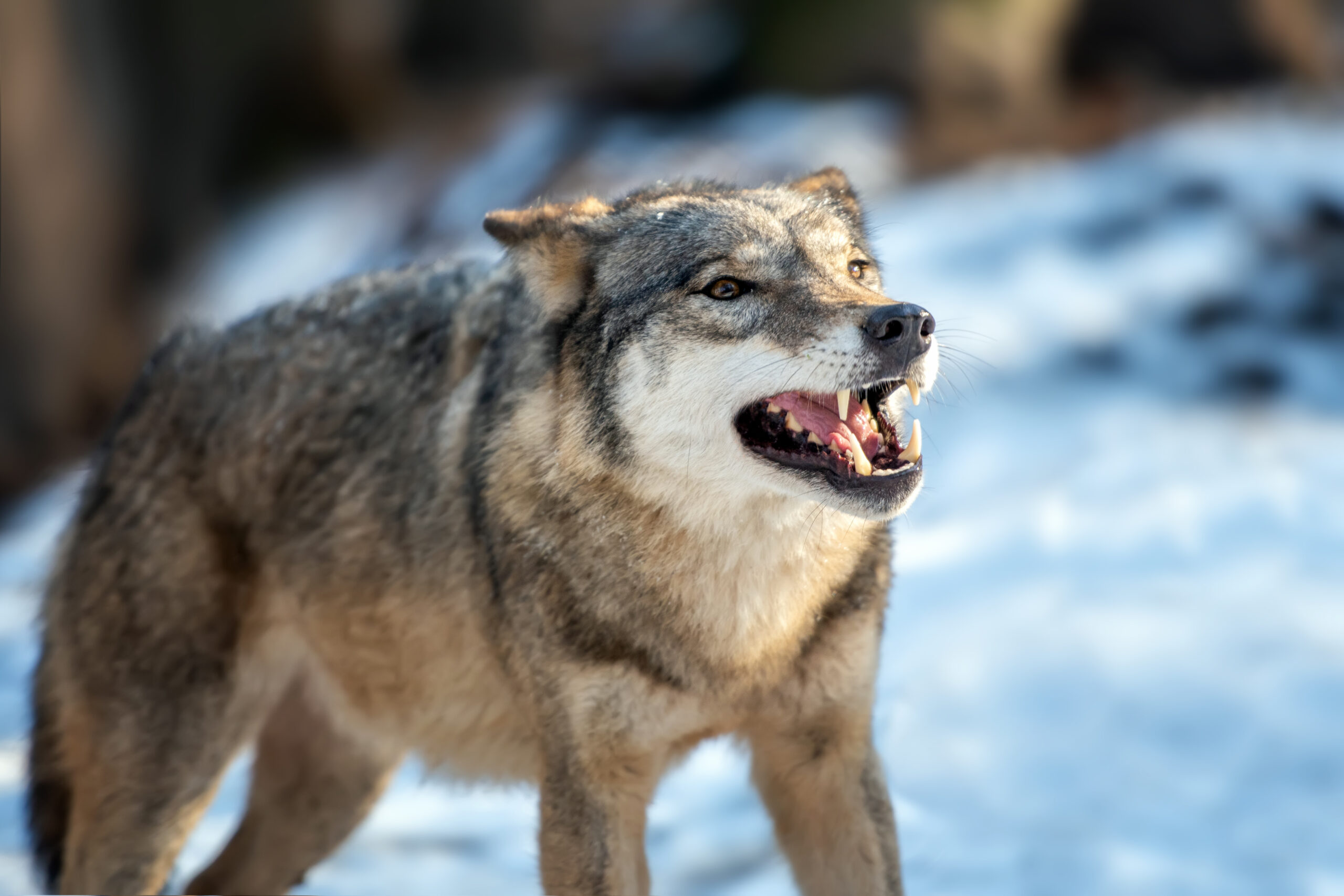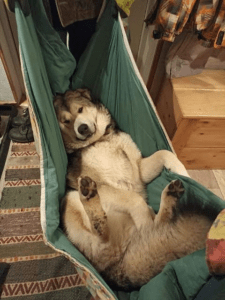Does pet and cattle insurance cover wolf attacks on domestic animals?

Does pet and cattle insurance cover wolf attacks on domestic animals?
Over the past year, the Estonian press has frequently reported wolf attacks, including on livestock and dogs. Pet and cattle insurance does not prevent such attacks, but does the insurance contract cover the damage they cause?
ERR writes that wolves have increased from 19 packs to 39 in 9 years. With this increase, wolf attacks on sheep flocks have also increased, regardless of how well the owners protect their livestock. Mirjam Pikkmets, CEO of the Estonian Sheep and Goat Breeders’ Association, referred to a wolf attack in the Kukruse district of Kohtla-Järve. In this attack, a wolf broke through a fence recognised as predator-proof.
Frequent wolf attacks in Viljandi County
While in September 2024, it was written in the Kärstna village Facebook group how wolves had mauled several dogs in the Veisjärv and Pahuvere areas at the end of the summer and that officials had not even shown up to the latest incidents, Maaleht wrote just before Christmas about another wolf attack in Viljandi County, where the wolf managed to drag the dog by the throat into the forest, but where the dog owner was, fortunately, able to retrieve his animal alive.
A member of the public described seeing a large black dog dragging his three-year-old dog toward the forest. After finding the tracks and hearing a scream, the wolf finally let go of the man’s pet and ran into the forest.
Photo of a dog injured in the forest on its way home from the vet.
A few days later, Sakala wrote about an incident in the village of Pahuvere in Mulgimaa, where wolves had once again mauled a dog in the yard in the village centre just a few weeks earlier (which has not been reported in the press), and how the dog owner tried to save his pet from the wolf pack attack by running over them with a car.
The wolf pack, consisting of at least five members, stopped attacking the dog when the car approached and fled a short distance away. However, it then watched the vehicle rather than run into the forest. The dog limped to its kennel and refused to come out. Unfortunately, the dog died a few days later from injuries from the wolf attack. The owner said he did not want to leave the house for a long time after this sad event.
The latest news is about a wolf attack on the morning of February 1, which Sakala wrote about again. In the village of Äng in Viljandi County, wolves mauled an eight-year-old dog right next to a house that had gone to the barn with its owner in the morning.
History of wolf attacks in Estonia
Imeline ajalugu shares wolf researcher Ilmar Rootsi’s doctoral thesis about how, in the 19th century, the situation with wolf attacks in East Estonia was so out of control that over a period of 50 years (1804–1853), man-eating wolves mauled at least 111 people (statistics only reflect Lutherans), of whom 108 were children, one woman and two men. The darkest year was 1809 when at least 45 children fell victim to wolves.
According to Rootsi, studies and historical experiences show that although wolves have an innate fear of humans, some wolves have an inherent urge to attack people and do not do so solely out of hunger.
He adds: “The prerequisite for this is also the situation where wolves are not hunted, which is why they have lost their fear of humans. In addition to naturally aggressive animals, sick, injured, and old individuals that can no longer catch their natural prey can also become dangerous to humans, as well as (mother) wolves that are worried about feeding their voracious puppies – there are even more reasons and situations. Then the safest and easiest prey for such animals is a human child!”.
Hunting wolves versus those defending animal rights
ERR writes that the wolf hunt lasted only a few days, and one wolf even lost its life until the court stopped the hunt again under preliminary legal protection. Eleri Lopp, a representative of MTÜ Eesti Suurkiskjad, believes that the current hunting limits are based on an agreement between interest groups and that there are not as many wolves as claimed.
Lopp said, “If you look at the Environmental Agency’s monitoring and reports, they are mainly based on data received from hunters, e.g., trail cameras. Today, the question is whether this is reliable and what can be used to say that the wolf is in a favourable condition.”
Lopp believes that better preventive measures should be used instead of hunting because the wolf simply protects its territory, and breaking is its natural behaviour. The woman calls the allegations that Lopp, who organises nature tours for foreigners, is motivated by a desire to protect his business interests and slander by hunters.
On November 15, the Virumaa Teataja wrote that the current wolf protector, Eleri Lopp, has allegedly previously been involved in organising hunting tourism and has mediated hunters from abroad to Estonia through the company OÜ Estonian Nature.
Record-high wolf numbers
The Environment Agency published news at the beginning of July 2024 that the number of wolves had increased significantly again. In the fall of 2023, there were 39 wolf packs with puppies, and the total number of wolves was between 350 and 400 individuals, a 25-year record. Since the amount of damage caused by wolves has also increased significantly, it is recommended to increase the wolf hunting volume compared to last year in order to reduce the number. However, despite this, the Environmental Board issued a preliminary hunting limit of 90 animals for the wolf hunting season at the beginning of November, which was challenged in court by MTÜ Eesti Suurkiskjad.
So much is happening on the opposing front that at the end of January 2025, the Environmental Board finally decided to confirm the new wolf hunting volume for the 2024/2025 hunting year as 121 individuals instead of 90. In the Viljandi-Valga management area, 7 individuals instead of the previous 5 wolves may be hunted. The Environmental Board increased the wolf hunting volume in the Ida-Viru and Pärnu-Viljandi management areas with the highest priority by a total of 13 individuals, as repeated damage to livestock and pets had been observed in these areas after the proposal for the 1st part of the hunting volume was made.
By January 13, hunters had hunted a total of 59 wolves in Estonia. Sakala describes that in Viljandi County, where wolves have killed over a dozen dogs in a few months, only four or five wolves have been shot, one of which was an animal with severe mange, which was probably one of the ones who went to kill dogs in the yards. Sakala‘s later news tells how 97 hunters who were out hunting on the lands of the Vambola Hunting Society in Viljandi County in the Kärstna area cornered five wolves, of which an additional grey wolf was caught during a four-hour hunt.
According to the Environmental Board, a total of 69 wolves had already been hunted in Estonia as of 31st January 2025.
Wolf attacks and animal insurance
Pet and livestock insurance are intended to help cover unexpected medical costs if a pet gets injured or falls ill. Since insurers also pay compensation if your pet dies, disappears, is stolen, or damages someone else’s property, under what conditions does animal insurance apply to wolf attacks?
Both pet insurance and animal insurance, and both If Insurance and ERGO, consider a wolf attack to be an insured event, meaning that the costs incurred are compensated according to the insurance contract. If insurance replied that since it is not an excluded event, then yes, wolf attacks are included in their pet and dog insurance policies. The ERGO Insurance representative specified that a wolf attack can be covered by veterinary expenses [if the animal survives], and the death of the animal is also covered by the insurance contract [risk].
Due to the insurance conditions, an exclusion may be the injury or death of an animal that has run away from home, since pet insurance is concluded as an add-on to the home insurance contract by default.
Possible exclusions in livestock insurance
Since the death of an animal as a result of an accident is not considered an insured event during theft, robbery or attempts at these crimes, in order to prove that the animal was broken by predators, it is necessary to find the carcass or remains of the insured animal, on the basis of which it is possible to determine that the death of the insured animal was indeed caused by the breaking by predators.
Deductible
The deductible is the part of the costs incurred by the insured event that is borne by the policyholder. In the event of an animal becoming ill or injured, the costs incurred for its treatment and/or examination (examinations or treatment at a veterinary clinic, purchase of medicines, fees to a veterinarian, etc.), unless otherwise agreed.
